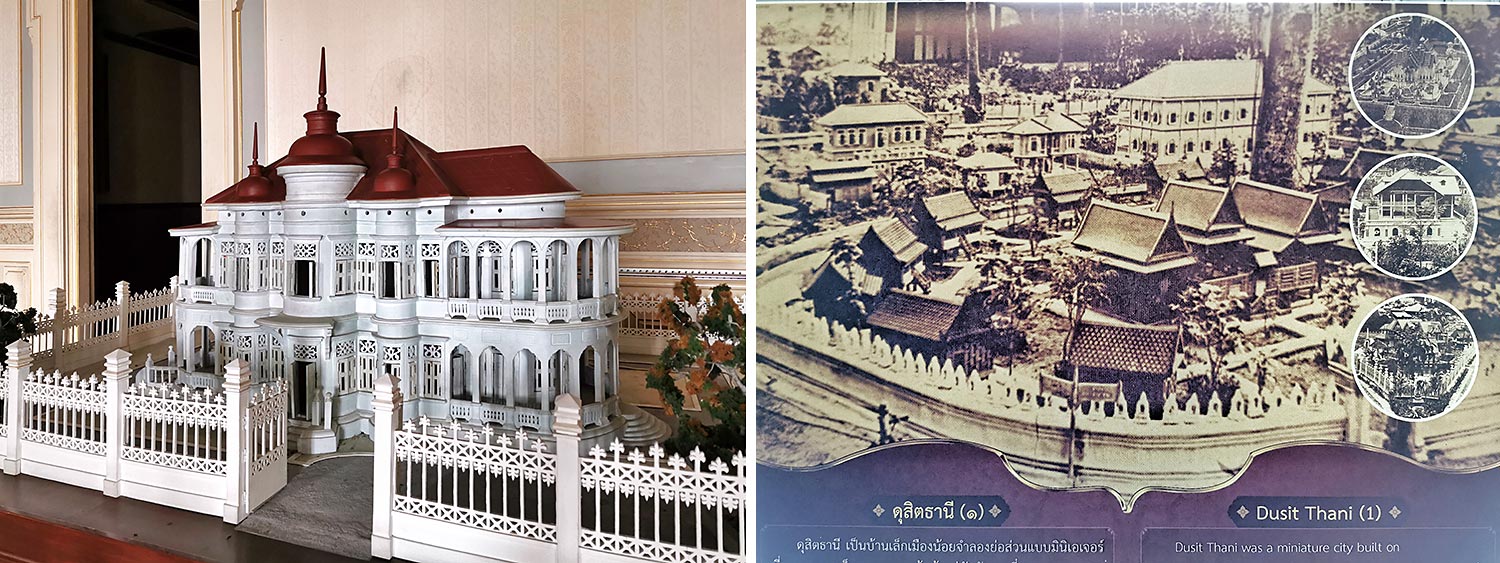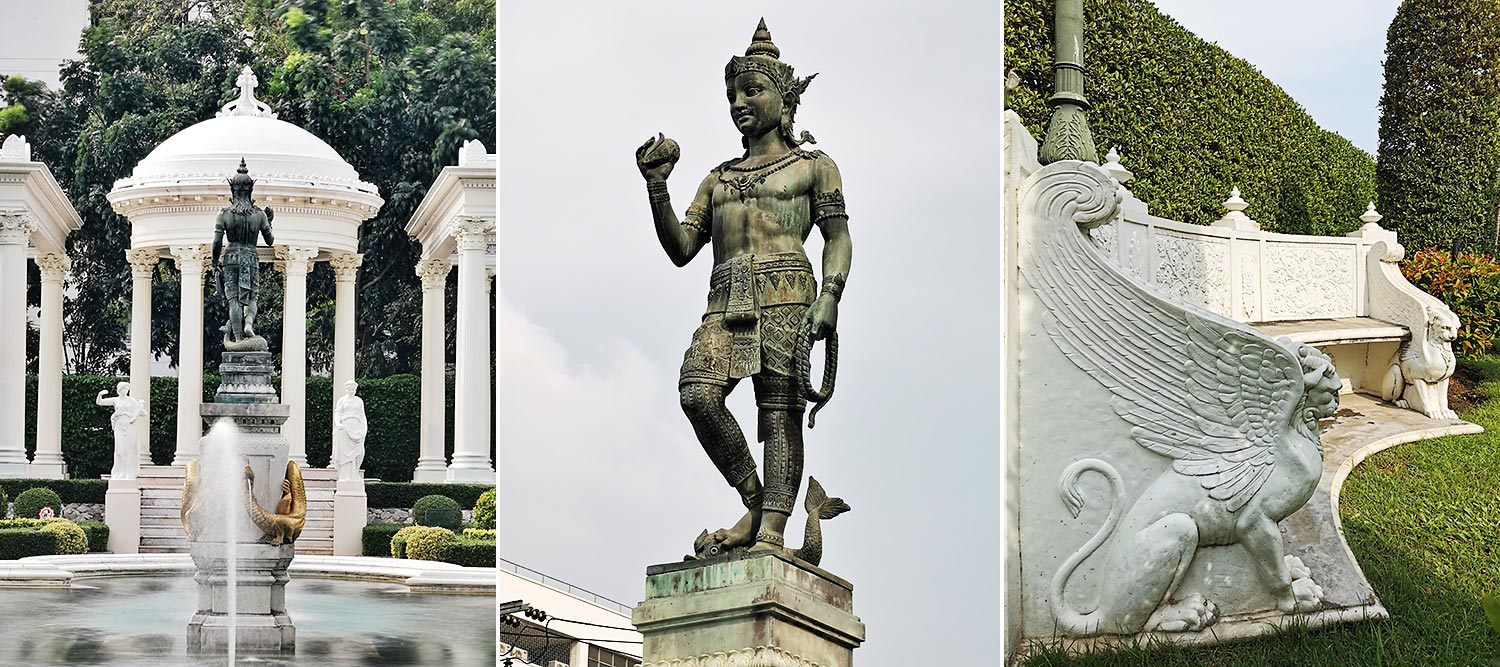After a month of closure due to the recent Covid-19 surge, the history-rich Phyathai Palace is set to reopen in February.

The Thewarat Sapharom Hall is the oldest building in Phyathai Palace. It was built during the reign of King Vajiravudh to serve as an audience hall for his mother Queen Sri Bajarindra who moved to live in the palace permanently after the death of King Chulalongkorn in 1910. When the Queen Mother herself passed away nine years later, King Vajiravudh decided to turn the place into a new palace of his own. He had all of the old buildings dismantled to make way for the new ones, except for the Thewarat Sapharom Hall. The king used it for functions and performances.
Tens of thousand Bangkokians commute on Ratchawithi Road each day. Yet few stop to get a closer look at one of the most elegant groups of architecture on this road, Phyathai Palace.
Currently a museum, Phyathai Palace is flanked by Phramongkutklao Hospital on the east side and the Royal Thai Army Nursing College on the west side. Both neighbours share the piece of land that was once the palace grounds.
Over the past century, the royal compound has gone through many phases of evolution. It all began when King Chulalongkorn (Rama V) bought farmland in this area less than 3.5km east of Suan Dusit Palace (later renamed Dusit Palace during the next reign) so he could try his hand at farming. In 1909, King Chulalongkorn had a royal residence built on his farm so he could stay overnight. It was completed in May and was one of his favourite places to unwind after work. The Phyathai Residence was just a short drive on his electric car from the Suan Dusit Palace.
Unfortunately, the king passed away on Oct 23 of that same year, ending his 42-year reign. At the request of their eldest son and the new monarch King Vajiravudh (Rama VI), Queen Sri Bajarindra moved from the crowded Grand Palace to live in the Phyathai Residence for health reasons. After she passed away in 1919, King Vajiravudh turned the compound into a palace, replacing the old wooden buildings with larger ones as we see today.
Not long before the end of his reign, the king mentioned to his half-brother Prince Purachatra Jayakara (the Prince of Kamphaeng Phet) who headed the Royal Railway Department that was running a successful hotel in Hua Hin (now a Centara Grand), that he wished to turn Phyathai Palace into a hotel too. On Feb 18, 1926, merely two-and-a-half months after King Vajiravudh's death, the Phyathai Palace Hotel was officially launched. The luxury property was very popular among expats and elites. A room on its second floor served as a radio broadcasting station.
However, the business ended after the revolution in 1932 when the hotel was taken over by the military, which used it as a hospital. The hospital, which is now known as Phramongkutklao Hospital in honour of King Vajiravudh -- who is better known among Thais as Phrabat Somdet Phra Mongkutklao Chao Yuhua -- later expanded and moved to newly built buildings nearby.
The palace buildings were registered as a national heritage in 1979. Now a museum, Phyathai Palace is normally opened to the public four days a week: Tuesday, Thursday, Saturday and Sunday. Because of the recent Covid-19 surge, it was closed during January. It will reopen on Tuesday.

Although the history of Phyathai Palace goes back to the times of King Chulalongkorn (Rama V), the buildings we see nowadays were constructed during the reign of his son King Vajiravudh (Rama VI) whose portrait graces the main room on the upper floor of Phiman Chakri, the principal building of the royal complex shown in the main picture. At the palace, which now serves as a museum, you can see the original architecture only in old photographs on display. Looking at those pictures from yesteryear, you may wish the wooden structure still existed. Guess what, it actually does, although minus the tower. It was first relocated to the Royal Page School (currently Vajiravudh College) and later to Wat Rachathiwat in Dusit district to be used as a residence for monks.

Right in front of Phiman Chakri, the palace’s principal building, is a small structure that used to serve as the royal car-boarding platform and rest area for those waiting for an audience with King Rama VI. Nowadays, it houses the vintage-style Café Narasingh, which borrows the name from a similar establishment that was in operation during the king’s reign.






Phyathai Palace is made up of seven buildings with Phiman Chakri, the one with the tall pointed dome, as the main structure. Linked with it on the west side is Sisuthaniwat and on the east side Waikun Thepayasathan. These three buildings of mixed Western architectural styles house rooms and halls that are designed for different purposes. They may not be exuberantly decorated but still are full of charming details and enticing stories from the past. In front of these buildings are the Thewarat Sapharom Hall and Café Narasingh. Hidden in the back, which should not be missed, are a beautiful garden and Mekhala Ruchi, the small but cleverly designed house that King Vajiravudh stayed in when he came to oversee the construction of the main buildings. The seventh building Udom Wanapon is now used by Phramongkutklao Hospital and not open to the public.


King Vajiravudh spent almost a decade of his youth studying in the UK, therefore he was familiar with the parliamentary system. However, that was not the case for the majority of Thais in those days. To introduce the idea of this Western system of governance to Siamese society, the king conducted an experimental project named Dusit Thani after the Dusit Palace where it was first launched in 1918. About a year later the project site was relocated to the new Phyathai Palace and operated there until the end of the sixth reign. Over 200 men and women, mostly government officials, participated. These people, King Vajiravudh himself included, acted as citizens of Dusit Thani, a miniature town. Each member had to build a miniature house and obtain a different identity. In the experimental society, the absolute monarch in real life became a lawyer and leader of one of the Lilliputian town’s two political parties. Numerous activities and events took place in Dusit Thani during its seven years of existence, including municipal elections. Unfortunately, in terms of spreading awareness of the democratic system, the project was far from successful. In one of the old photos, you can see the area behind the main buildings of Phyathai Palace (already a hotel when this picture was taken) where Dusit Thani used to be located. Very few of the miniature buildings that used to be in the experimental mini-town still remain.

Between Phiman Chakri and the former site of Dusit Thani miniature town lies the Roman Garden. It’s a fresh and relaxing spot decorated with a number of sculptures. Standing out from the rest in the garden is the metal statue of Varuna, the god of water said to have been designed by Prince Naris, one of Siam’s topmost designers. The sculpture was made in Florence, Italy, by Corrado Feroci who later was better known by his Thai name Silpa Bhirasri. It’s this very piece that caused him to be invited to work in the Kingdom where he was eventually regarded as Thailand’s father of modern art.

This huge birdhouse was moved from a nearby location to its current site next to the former royal car-boarding platform. Its design mimics the pointed dome of the Phiman Chakri Building on the other side of the driveway. I was told different kinds of birds take turns to use the manmade shelter for nesting. On the day I shot these two photos, however, I found only sparrows. I wonder whether these humble feathered fellows knew how lucky they were to get to live in a palace.

This huge birdhouse was moved from a nearby location to its current site next to the former royal car-boarding platform. Its design mimics the pointed dome of the Phiman Chakri Building on the other side of the driveway. I was told different kinds of birds take turns to use the manmade shelter for nesting. On the day I shot these two photos, however, I found only sparrows. I wonder whether these humble feathered fellows knew how lucky they were to get to live in a palace.

On the northern side of Phyathai Palace, which is bordered by Sam Sen Canal, stands the shrine of Thao Hiran Phanasun, the spirit that is believed to have been the protector of King Vajiravudh ever since he was a prince. Even these days Thao Hiran Phanasun is still highly revered by the public, especially personnel and patients of Phramongkutklao Hospital, which shares the premises.

In Phyathai Palace, you can also learn about the ingenuity of people in the early 20th century. From doors that can open but are still able to prevent people from entering to latches and locks designed to be seriously secured and secret vaults, there are quite a few things that will amaze you.
TRAVEL INFO
- Phyathai Palace is located on Ratchawithi Road, just a kilometre or so from the Victory Monument BTS station.
- For the first week of February, the palace is opened only on Tuesday, Thursday and Sunday. During this period, all visitors are required to register in advance as guided tours of the interior are limited to 20 people. There are two sessions each day, at 9.30am and 1.30pm. The palace's volunteer guides are friendly and impressively knowledgeable.
- During the tour, visitors are allowed to photograph all rooms but taking selfies or any picture with people in them is prohibited.
- For details and inquiries, visit the Phyathai Palace page on Facebook.


